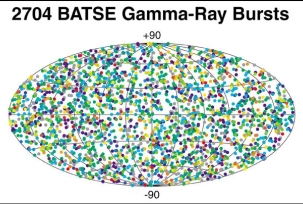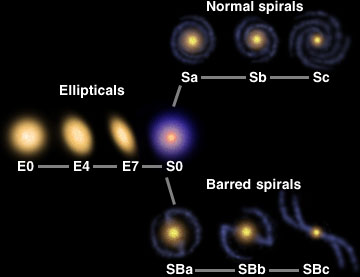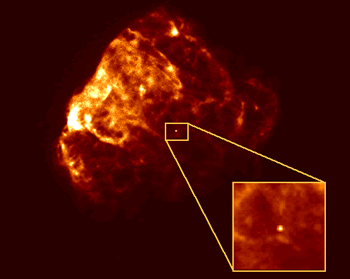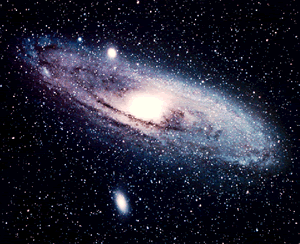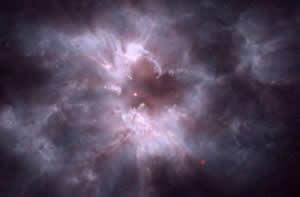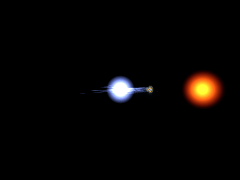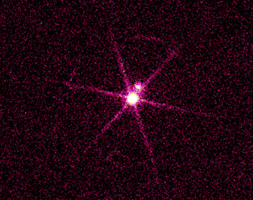
An infrared image of the binary star Capella, obtained from an array of optical telescopes.
COAST / MRAO Cambridge
COAST / MRAO Cambridge
Capella - Actually a Pair of Yellow Giants
| What's in a Name: | Latin for "little she-goat". Also called alpha Aurigae. |
| Claim to Fame: | 6th brightest star in the night sky. Capella is the name given to a double star system (both stars are yellow giants). The two stars appear unresolved even when looking through a telescope (ie, they appear to be only one star). Only interferometry shows that Capella is actually two stars! Important for navigation because it is the closest bright star to the north star and therefore is visible at least part of the night every month. |
| Type of Star: | Yellow Giant (Spectral Class G5 III). Approximately the same color and temperature as the sun but a giant star. |
| How Far Away: | 46 light years |
| How Big: | 16 times the sun's radius |
| How Bright: | 150 times brighter than the sun in visible light |
| Where to View: | In the constellation of Auriga |
| When to View: | Near celestial pole, visible all year from mid-northern latitudes |
Last modified April 29, 2005 by Travis Metcalfe.






